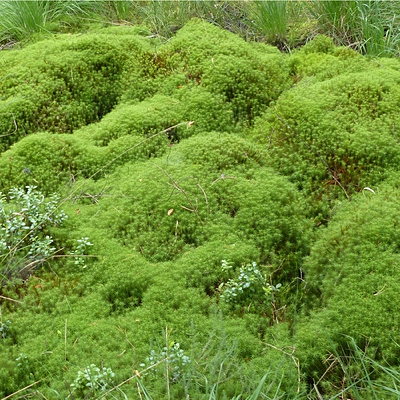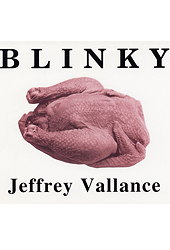Peat Moss Diapers
A manual on infant care, released by the U.S. Department of Labor in 1914, recommended peat moss (aka sphagnum moss) for use in diapers:

Some googling reveals that Native American tribes, way back when, would often use peat moss for diapers.
And at the Earthling's Handbook you'll find an account by a modern-day couple who used peat moss for diapers and reported positive results:
From the Karitane Harris Hospital, in Dunedin, New Zealand, we learn of the use of sphagnum moss for these absorbent pads. The moss is that which florists use for packing plants and grows very extensively in the swamp regions of the United States, but it needs to be thoroughly dried and cleaned of sticks and stems before being used for this purpose.
Such a pad (i.e., a pad of sphagnum moss inclosed in cheesecloth) weighing only an ounce will completely absorb and retain a quarter of a pint of urine—say as much as would be passed in the night. This is infinitely cleaner and healthier than allowing the urine to spread over a wide area of napkin and nightdress, and thus cause extensive chillding and more or less irritation of the skin. Dry sphagnum forms an extremely light, clean, airy, elastic pad, which will yield in any direction and accommodate its shape to the parts.
Those living in the country where this moss grows may find it a great convenience to pick and dry the moss for this or other domestic purposes.
Such a pad (i.e., a pad of sphagnum moss inclosed in cheesecloth) weighing only an ounce will completely absorb and retain a quarter of a pint of urine—say as much as would be passed in the night. This is infinitely cleaner and healthier than allowing the urine to spread over a wide area of napkin and nightdress, and thus cause extensive chillding and more or less irritation of the skin. Dry sphagnum forms an extremely light, clean, airy, elastic pad, which will yield in any direction and accommodate its shape to the parts.
Those living in the country where this moss grows may find it a great convenience to pick and dry the moss for this or other domestic purposes.

peat moss
Some googling reveals that Native American tribes, way back when, would often use peat moss for diapers.
And at the Earthling's Handbook you'll find an account by a modern-day couple who used peat moss for diapers and reported positive results:
it was so convenient. When it was time for a diaper change, we would simply remove the moss, and if we were home, we would compost it under a fruit tree. If we were on the trail hiking, we would simply tuck the soiled moss into the topsoil and cover it with leaves or other forest duff. On car trips, we would pull off the highway and bury it. (Once we even discreetly slipped a wad of our nitrogen-enriched sphagnum deep into the mulch under landscape shrubbery outside a shopping mall.)
Comments
People! Sphagnum and peat are not the same! This would be similar to saying you are a snail. Peat is dug from a bog, and it amounts to fancy dirt. Sphagnum is a plant. Adding the word "moss" is redundant, by the way. Here's a picture of some living sphagnum:
https://eol.org/media/8096467
Here it is in its dried form. It's typically pressed into a block for retail:
https://www.dreamstime.com/pile-dry-sphagnum-moss-pile-dry-sphagnum-moss-isolated-white-image115378594
Ask any orchid or hanging fern. It will happily explain the difference to you.
I'm going now to edit the incorrect Wikipedia page, so you troglodytes may become educated on this critical matter.
https://eol.org/media/8096467
Here it is in its dried form. It's typically pressed into a block for retail:
https://www.dreamstime.com/pile-dry-sphagnum-moss-pile-dry-sphagnum-moss-isolated-white-image115378594
Ask any orchid or hanging fern. It will happily explain the difference to you.
I'm going now to edit the incorrect Wikipedia page, so you troglodytes may become educated on this critical matter.
Posted by Virtual in Carnate on 02/26/22 at 05:19 PM
While you're at it, try to find this ad about sanitary pads from the '90 that proudly announced that their product is made from Sphagnum and therefore thinner than ordinary pads.
Posted by Yudith on 02/27/22 at 06:26 AM
@Virtual: Nonsense. Sphagnum's common name is peat moss, and for good reason: a lot of the vegetable matter that makes peat is indeed sphagnum. Now, you may quibble that there is more to peat than Sphagnum, and that not all Sphagnum makes peat; but there is none of a snail that makes me, and none of me that ever will be a snail.
In other words: peat and Sphagnum may not be exactly the same, but they are intricately linked. And peat is a lot more than just "fancy dirt". If you believe that, you've never walked on a proper peat soil. Come to the Netherlands, and see the difference between the Ellertsveld, the Weerribben, the polder clay, and the Drunense Duinen.
In other words: peat and Sphagnum may not be exactly the same, but they are intricately linked. And peat is a lot more than just "fancy dirt". If you believe that, you've never walked on a proper peat soil. Come to the Netherlands, and see the difference between the Ellertsveld, the Weerribben, the polder clay, and the Drunense Duinen.
Posted by Richard Bos on 03/05/22 at 02:35 PM
Commenting is not available in this channel entry.



Category: Babies | Nature